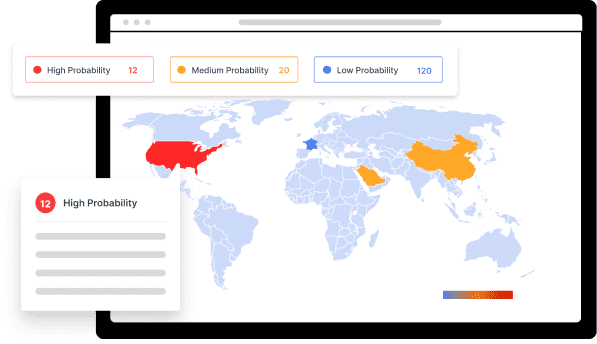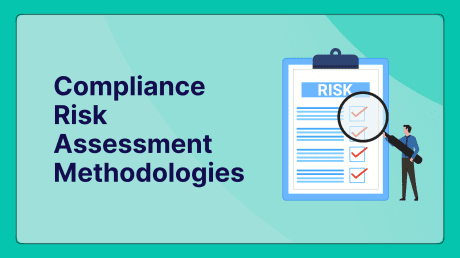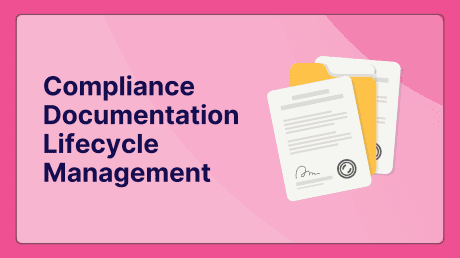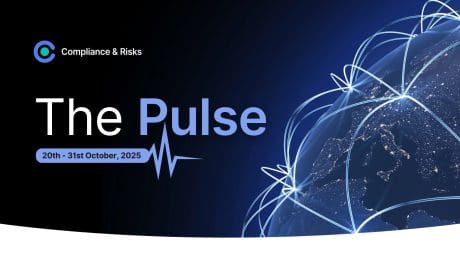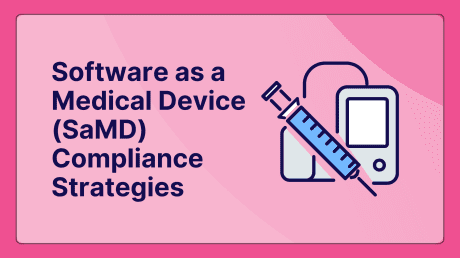
GHS Safety Data Sheet Authoring and Maintenance: A Complete Guide to Compliance Excellence
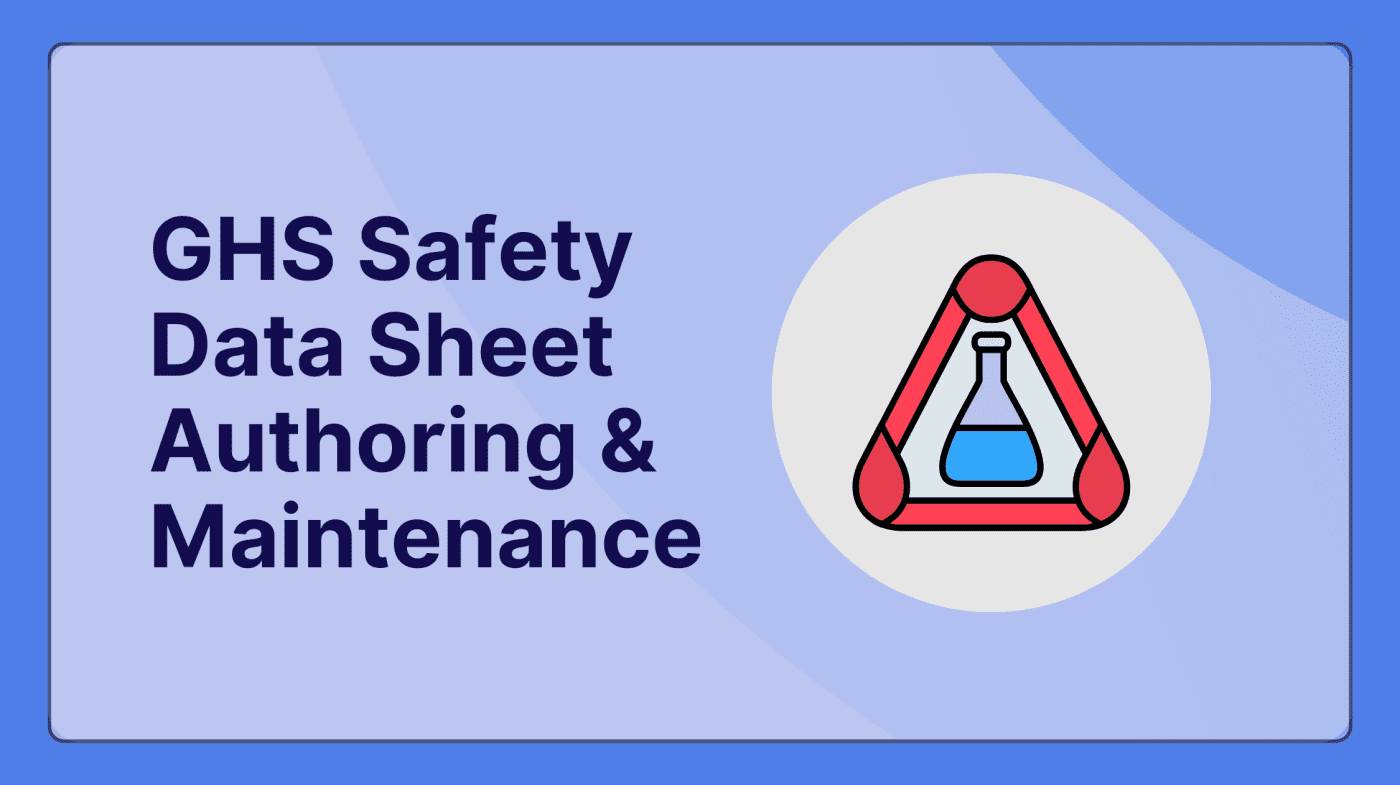
THIS BLOG WAS WRITTEN BY THE COMPLIANCE & RISKS MARKETING TEAM TO INFORM AND ENGAGE. HOWEVER, COMPLEX REGULATORY QUESTIONS REQUIRE SPECIALIST KNOWLEDGE. TO GET ACCURATE, EXPERT ANSWERS, PLEASE CLICK “ASK AN EXPERT.”
Chemical manufacturers, suppliers, and importers face an escalating challenge: ensuring their Safety Data Sheets (SDSs) meet evolving global regulatory standards while managing costs and operational complexity. With OSHA fines reaching $165,514 for willful or repeat violations and 94% of SDSs requiring revision under the new HazCom 2024 standard, the stakes have never been higher.
This comprehensive guide cuts through the complexity of GHS SDS authoring and maintenance, providing the strategic framework you need to evaluate solutions, understand emerging requirements, and build a compliance strategy that protects your business while supporting global expansion.
Table of Contents
- The True Cost of SDS Non-Compliance
- HazCom 2024: What Changed and Why It Matters
- Mastering the 16-Section GHS SDS Format
- Beyond Basic Compliance: Technical Complexities Often Overlooked
- In-House vs. Outsourced SDS Management: A Strategic Analysis
- Evaluating SDS Solutions: Your Decision Framework
- Building a Future-Proof SDS Strategy
- Frequently Asked Questions
The True Cost of SDS Non-Compliance
The financial impact of inadequate SDS management extends far beyond initial compliance costs. These costs reflect historical estimates from OSHA’s 2012 HCS alignment impact analysis, with businesses continuing to face significant compliance investments. However, the real risk lies in non-compliance penalties.
OSHA’s enforcement statistics paint a stark picture. Standard violations carry fines of $16,550 per incident, while willful or repeated violations can reach $165,514. These aren’t theoretical risks – they represent documented penalties imposed on businesses that failed to maintain compliant documentation.
Beyond regulatory fines, non-compliant SDSs create cascading business risks:
Supply Chain Disruptions: Customers increasingly audit supplier compliance before establishing relationships. Inadequate SDS documentation can disqualify your products from major procurement processes, limiting market access and revenue potential.
Product Liability Exposure: Inaccurate hazard communication increases legal liability if workplace incidents occur. Legal costs and settlements often dwarf regulatory fines, particularly in jurisdictions with strict product liability frameworks.
Market Access Restrictions: Different regions require specific SDS formats and translations. Poor documentation quality can delay product launches, increase customs clearance times, and trigger additional regulatory scrutiny.
Operational Inefficiency: Manual SDS management processes consume significant internal resources. Technical staff spend time on documentation rather than innovation, while legal teams manage compliance fires instead of strategic initiatives.
The data reveals a clear pattern: proactive SDS management represents an investment in business resilience, while reactive approaches create compounding costs and operational friction.
HazCom 2024: What Changed and Why It Matters
OSHA’s HazCom 2024 standard, effective July 19, 2024, represents the most significant update to US chemical hazard communication requirements in over a decade. This revision aligns US standards primarily with GHS Revision 7 (with select elements from Revision 8), introducing changes that affect virtually all chemical products in commerce.
New Hazard Classifications
The updated standard introduces new hazard classes that expand the scope of regulated substances:
Desensitized Explosives: Previously unregulated desensitized explosive substances now require specific hazard communication protocols. This affects manufacturers of certain industrial chemicals, propellants, and specialized compounds used in mining and construction applications.
Chemicals Under Pressure: A new hazard class separate from aerosols, covering substances stored under pressure that may present unique hazards during handling or storage.
Flammable Gases (Revised): The standard updates flammable gas classifications, creating Category 1A and 1B subcategories, with pyrophoric gases treated as a subcategory under 1A rather than a standalone class.
Aerosols (Updated Criteria): Existing aerosol criteria have been expanded and updated, with scope extending beyond just flammable aerosols to address broader safety concerns.
Critical Implementation Requirements
The regulation’s impact varies by product category, but the statistics are striking. According to OSHA’s economic analysis for the 2024 rule, 94% of existing SDSs for regulated products require revision to comply with the new standard. Additionally, 64% of product labels need updates to reflect new hazard communication requirements.
Key Compliance Deadlines:
- Substances: January 19, 2026 (18 months from effective date) for classification updates, label revisions, and SDS modifications
- Mixtures: July 19, 2027 (36 months from effective date) for complete compliance implementation
- Employer Programs: July 19, 2026 for substance-related training updates; January 19, 2028 for mixture-related program updates
Small Container Labeling: Special provisions now apply to immediate containers ≤100 mL, providing flexibility for space-constrained labeling situations.
Revised Hazard Statements: Many existing hazard statements have been modified for clarity and consistency with international standards. These changes affect both SDS Section 2 (Hazards Identification) content and product labeling requirements.
Updated Precautionary Statements: New and modified precautionary statements require careful review of existing documentation. Some previously acceptable statements no longer meet compliance standards, while new options provide clearer guidance for safe handling.
Enhanced Specificity Requirements: The revised standard demands more precise hazard communication in several areas, including specific concentration ranges for hazardous components and more detailed exposure control recommendations.
Strategic Compliance Considerations
Organizations evaluating their HazCom 2024 response should consider several factors beyond immediate compliance needs:
Transition Timeline Management: While the standard is effective immediately, practical implementation requires systematic review and revision of potentially hundreds or thousands of documents. Prioritization strategies become critical for managing workload and ensuring the most critical products receive attention first.
Training Program Updates: Employee training programs must reflect new hazard classes and communication requirements. This extends beyond document creation to include warehouse staff, transportation personnel, and customer education initiatives.
Technology Integration Needs: Manual compliance management becomes increasingly impractical as regulatory complexity grows. The new requirements highlight the importance of systems that can track changes, manage version control, and ensure consistent implementation across product lines.
Companies that view HazCom 2024 as merely a compliance exercise miss strategic opportunities. Forward-thinking organizations use regulatory updates as catalysts for improving overall chemical management systems, enhancing operational efficiency, and strengthening competitive positioning through superior compliance capabilities.
Mastering the 16-Section GHS SDS Format
The GHS SDS format’s 16-section structure provides the framework for consistent hazard communication worldwide. However, compliance excellence requires understanding not just what information belongs in each section, but how to present it effectively for different audiences and regulatory contexts.
Sections 1-8: Critical Information for Immediate Use
The first eight sections contain information essential for immediate decision-making about chemical handling, storage, and emergency response.
Section 1 (Identification) establishes product identity and supplier information. Common compliance failures include inconsistent product names across documentation, incomplete supplier contact information, and missing emergency telephone numbers for different time zones or languages.
Section 2 (Hazard Identification) communicates the most critical safety information through standardized hazard statements and precautionary statements. Under HazCom 2024, this section requires particular attention to new hazard classes and updated statement language.
Section 3 (Composition/Information on Ingredients) presents significant challenges for complex products. Proprietary formulations require careful balance between trade secret protection and adequate hazard communication. The section must identify hazardous components above specified concentration thresholds while maintaining competitive confidentiality.
Section 4 (First-Aid Measures) provides immediate response guidance, but many SDSs fail to account for different exposure scenarios or provide route-specific treatment recommendations. Effective first-aid sections address inhalation, skin contact, eye contact, and ingestion separately, with clear language accessible to non-medical personnel.
Sections 5-8 address fire-fighting, accidental release, handling and storage, and exposure controls respectively. These sections often suffer from generic language that fails to address product-specific risks or provide actionable guidance for real-world scenarios.
Sections 9-16: Supporting Technical Information
The remaining sections provide detailed technical data supporting risk assessment and regulatory compliance decisions.
Section 9 (Physical and Chemical Properties) requires accurate data that supports hazard classification decisions. Incomplete or inconsistent physical data can trigger regulatory questions and compliance investigations.
Section 11 (Toxicological Information) presents particular challenges for products without extensive toxicity testing. This section must present available data honestly while avoiding unsubstantiated claims about safety or risk levels.
Section 16 (Other Information) often functions as a catch-all for classification methodologies, data sources, and revision tracking. Well-managed Section 16 content supports regulatory audits by documenting the basis for classification decisions and hazard communication choices.
Quality Assurance Across All Sections
Effective SDS authoring requires systematic quality assurance that extends beyond regulatory compliance checking. Common quality issues include:
Internal Consistency Failures: Information conflicts between sections undermine document credibility and can trigger regulatory scrutiny. Hazard statements in Section 2 must align with exposure controls in Section 8 and physical properties in Section 9.
Audience Appropriateness: SDSs serve multiple audiences, from warehouse workers to research chemists to regulatory reviewers. Content must remain technically accurate while remaining accessible to users with varying technical backgrounds.
Regional Adaptation Requirements: While GHS provides global harmonization, regional implementations include specific requirements that affect content, format, and language. Effective SDS programs account for these variations without creating unnecessary complexity.
The most successful SDS programs treat the 16-section format as a communication framework rather than a compliance checklist, focusing on how information serves real-world decision-making needs while meeting regulatory requirements.
Beyond Basic Compliance: Technical Complexities Often Overlooked
Many organizations focus SDS efforts on obvious compliance requirements while overlooking technical complexities that significantly impact program effectiveness and business risk. Understanding these nuanced challenges separates adequate compliance from strategic advantage.
Substance Volume Tracking and Regulatory Triggers
Chemical regulations increasingly include volume-based thresholds that trigger additional requirements. REACH registration obligations, conflict minerals reporting, and various national inventory requirements depend on accurate substance volume tracking that many SDS systems fail to capture adequately.
Manufacturing Volume Impacts: Products manufactured or imported above specific annual tonnages face enhanced regulatory obligations. SDS systems must integrate with inventory and production management systems to track these thresholds and alert compliance teams before regulatory deadlines.
Customer Volume Aggregation: B2B chemical sales often involve multiple shipments to single customers throughout reporting periods. Effective compliance programs aggregate these volumes to identify when cumulative sales trigger customer notification requirements or enhanced due diligence obligations.
Supply Chain Volume Monitoring: Raw material purchasing patterns can trigger supplier obligations that affect product classification and hazard communication requirements. Sophisticated SDS programs monitor these upstream volume changes and assess downstream impacts on finished product documentation.
Multi-Language Phrase Libraries and Regulatory Context
Global chemical commerce requires SDSs in multiple languages, but effective translation extends far beyond linguistic conversion. Regulatory context, cultural communication preferences, and legal framework differences significantly impact translation quality and compliance effectiveness.
Regulatory Phrase Standardization: Each regulatory jurisdiction maintains standardized hazard and precautionary statement language. Generic translation services often miss these requirements, creating compliance gaps and potential enforcement issues.
Cultural Communication Adaptation: Risk communication effectiveness varies significantly across cultures. Direct warning language that works effectively in some regions may seem overly alarmist or insufficiently serious in others, affecting actual workplace safety outcomes.
Legal Framework Alignment: Product liability, workplace safety, and chemical regulation frameworks differ substantially between jurisdictions. SDS translations must account for these differences to provide legally appropriate guidance while maintaining consistency with global brand standards.
Technical Terminology Consistency: Chemical terminology translations require specialized expertise to ensure accuracy and consistency across documents. Poor technical translations can create confusion, safety risks, and regulatory compliance questions.
Raw Material Data Integration Challenges
Finished product SDSs depend on accurate upstream data from raw material suppliers, but data integration challenges often compromise document quality and compliance effectiveness.
Data Quality Variability: Supplier-provided SDSs vary significantly in quality, completeness, and update frequency. Many contain outdated information, missing data, or errors that propagate through downstream products without systematic verification processes.
Compositional Change Management: Raw material formulation changes often occur without adequate downstream notification. Effective SDS programs establish systematic monitoring processes that identify these changes and assess impacts on finished product classification and hazard communication.
Proprietary Information Balance: Suppliers often provide limited compositional information to protect trade secrets, requiring downstream manufacturers to make classification decisions with incomplete data. This creates potential compliance risks and product liability exposure.
Version Control Complexity: Managing version control across multiple suppliers, raw materials, and finished products creates exponential complexity. Changes to single raw material SDSs can trigger updates across multiple finished product documents, requiring sophisticated tracking and change management processes.
Advanced Regulatory Intelligence Integration
Static compliance approaches fail to address the dynamic nature of chemical regulation. Effective SDS programs integrate regulatory intelligence capabilities that anticipate and prepare for regulatory changes before they become compliance emergencies.
Regulatory Change Monitoring: Chemical regulations evolve continuously through new standards, enforcement guidance, court decisions, and industry best practices. Advanced SDS programs monitor these changes systematically and assess potential impacts on existing product portfolios.
Emerging Substance Regulation: New substances regularly become subject to enhanced regulation through various mechanisms. Early identification of these trends allows proactive adjustments to product formulations and hazard communication strategies.
Market Access Requirements: Different markets impose varying SDS requirements that change over time. Sophisticated programs maintain current intelligence on these requirements and assess compliance implications for market expansion strategies.
These technical complexities require systematic approaches and often specialized expertise. Organizations that address them proactively create competitive advantages through superior compliance capabilities, reduced regulatory risk, and enhanced operational efficiency.
In-House vs. Outsourced SDS Management: A Strategic Analysis
The decision between internal SDS management and external solutions involves multiple variables that extend beyond immediate cost considerations. Each approach offers distinct advantages and limitations that organizations must evaluate against their specific operational requirements, risk tolerance, and strategic objectives.
In-House SDS Management: Capabilities and Constraints
Internal SDS programs offer maximum control and customization but require significant resource investments and specialized expertise development.
Resource Requirements: Effective in-house programs require dedicated personnel with specialized training in chemical regulation, hazard assessment, and technical writing. OSHA estimates suggest that comprehensive SDS programs require 0.5-2.0 FTE positions per 1,000 products, depending on product complexity and regulatory scope.
Technical Infrastructure Needs: Internal programs require document management systems, regulatory databases, translation capabilities, and quality assurance processes. Initial system development costs typically range from $50,000-$200,000 for mid-sized operations, with ongoing maintenance representing 15-20% of initial investment annually.
Expertise Development Challenges: Chemical regulation expertise requires continuous education and professional development. Staff turnover can create significant knowledge gaps, while regulatory complexity continues to increase across jurisdictions.
Scalability Limitations: Internal programs often struggle with rapid product portfolio expansion or geographic market entry. Fixed personnel costs make it difficult to adjust capacity for seasonal fluctuations or project-based requirements.
Control and Customization Advantages: Internal programs offer complete control over quality standards, turnaround times, and documentation approaches. Custom processes can integrate seamlessly with existing product development, manufacturing, and quality systems.
Outsourced Solutions: Service Models and Selection Criteria
External SDS solutions range from full-service management to specialized software platforms, each offering different value propositions and implementation requirements.
Full-Service Management Models: Comprehensive outsourcing involves external providers handling all aspects of SDS creation, maintenance, and distribution. These services typically cost $200-$800 per document initially, with annual maintenance fees of $50-$150 per document.
Software-as-a-Service Platforms: SDS authoring platforms provide tools and databases that enable internal teams to create and maintain documents more efficiently. Monthly subscription costs typically range from $500-$5,000 per month, depending on user count and feature requirements.
Hybrid Service Models: Many organizations adopt hybrid approaches that combine internal oversight with external specialized services for specific functions like translation, regulatory research, or technical writing.
Quality and Reliability Considerations: External providers offer specialized expertise and systematic quality assurance processes that many internal programs struggle to maintain. However, service quality varies significantly between providers, making vendor selection critical.
Cost-Benefit Analysis Framework
Accurate cost comparison requires comprehensive analysis of direct costs, indirect expenses, and risk factors for each approach.
Direct Cost Components:
- Internal programs: Personnel costs, system investments, training expenses, regulatory database subscriptions
- External solutions: Service fees, software subscriptions, integration costs, vendor management overhead
Indirect Cost Factors:
- Internal programs: Opportunity costs of personnel allocation, scalability constraints, expertise development time
- External solutions: Coordination overhead, potential quality issues, reduced control flexibility
Risk Assessment Variables:
- Compliance risk exposure based on document quality and maintenance consistency
- Business continuity risks from personnel changes or vendor issues
- Scalability risks related to business growth or market expansion
ROI Calculation Methodology: Effective analysis considers both quantifiable costs and strategic value factors. Break-even analysis typically favors internal programs for organizations with 200+ products requiring regular updates, while smaller portfolios or specialized requirements often benefit from external solutions.
Decision Framework and Implementation Considerations
Strategic SDS management decisions should align with broader business objectives and operational capabilities rather than focusing solely on cost optimization.
Organizational Maturity Assessment: Organizations with established quality management systems and regulatory compliance capabilities often transition successfully to internal programs, while those with limited regulatory experience benefit from external expertise.
Product Portfolio Characteristics: Complex formulations, proprietary ingredients, and specialized applications often require internal expertise, while standardized products with well-established hazard profiles may be suitable for external management.
Market Strategy Alignment: Organizations with aggressive global expansion plans need flexible solutions that can accommodate rapid geographic scaling, while those with stable market positions may prioritize cost optimization and process standardization.
Technology Integration Requirements: Existing enterprise systems, product lifecycle management platforms, and customer communication channels influence the optimal solution architecture and vendor selection criteria.
The most successful organizations view SDS management as a strategic capability that supports broader business objectives rather than a compliance burden to minimize. This perspective leads to solution choices that enhance competitive positioning while meeting regulatory requirements effectively.
Evaluating SDS Solutions: Your Decision Framework
Selecting the right SDS management solution requires systematic evaluation of capabilities against specific business requirements. The market offers numerous options, each with distinct strengths and limitations that affect long-term program success.
Core Functionality Assessment
Essential capabilities form the foundation of effective SDS programs, but implementation quality varies significantly between solutions.
Document Creation and Authoring Tools: Evaluate interface usability, template flexibility, and data integration capabilities. Advanced solutions offer guided authoring processes that reduce errors while maintaining compliance with current regulatory requirements.
Regulatory Database Integration: Assess coverage breadth, update frequency, and accuracy of regulatory information. Solutions should provide access to current hazard classifications, standardized phrases, and jurisdiction-specific requirements across target markets.
Version Control and Change Management: Examine capabilities for tracking document revisions, managing approval workflows, and coordinating updates across product families. Sophisticated systems maintain audit trails and automate notification processes for affected stakeholders.
Multi-Language Support: Evaluate translation capabilities, phrase library management, and cultural adaptation features. Solutions should provide regulatory-compliant translations while maintaining consistency across document families.
Distribution and Access Management: Assess document delivery mechanisms, user access controls, and integration with existing customer communication systems. Modern solutions offer multiple distribution channels while maintaining security and version control.
Advanced Feature Evaluation
Differentiating capabilities often determine long-term program effectiveness and strategic value creation.
Automated Regulatory Monitoring: Advanced solutions monitor regulatory changes and assess impacts on existing document portfolios. This capability becomes increasingly valuable as regulatory complexity grows and change frequency accelerates.
Analytics and Reporting: Comprehensive analytics provide insights into program performance, compliance status, and operational efficiency. Useful metrics include document accuracy rates, update turnaround times, and regulatory change impact assessments.
API and Integration Capabilities: Modern solutions offer robust integration options that connect SDS management with existing enterprise systems. This enables automated data flow, reduces manual processes, and improves overall program efficiency.
Customization and Scalability Options: Evaluate solution flexibility for accommodating unique business requirements and growth scenarios. Scalable architectures support expanding product portfolios and geographic market entry without requiring system replacement.
Expert Support Services: Assess availability of specialized expertise for complex regulatory questions, unusual product classifications, and custom implementation requirements. Quality support services can significantly reduce internal resource requirements and improve program outcomes.
Implementation and Total Cost Analysis
Comprehensive cost evaluation extends beyond subscription fees to include implementation, training, and ongoing operational expenses.
Implementation Requirements: Assess data migration complexity, system integration needs, and user training requirements. Complex implementations may require 3-6 months for full deployment and user adoption.
Training and Change Management: Evaluate training program quality, documentation availability, and ongoing support resources. User adoption success often depends on implementation support quality rather than just software capabilities.
Ongoing Operational Costs: Consider maintenance requirements, upgrade processes, and administrative overhead. Solutions requiring significant internal administration may reduce apparent cost advantages.
Scalability Cost Models: Understand pricing structures for increased usage, additional users, and expanded functionality. Scalable pricing models prevent future cost surprises as programs grow.
Vendor Evaluation and Due Diligence
Solution selection should include comprehensive vendor assessment to ensure long-term partnership success.
Industry Experience and Expertise: Evaluate vendor experience in relevant industry segments and regulatory jurisdictions. Specialized expertise often provides significant value for complex compliance requirements.
Customer References and Case Studies: Review implementation experiences from similar organizations, focusing on actual outcomes rather than just feature satisfaction. Reference discussions should address both successes and challenges encountered during implementation and operation.
Financial Stability and Business Model: Assess vendor financial stability and business model sustainability. SDS management represents a long-term commitment, making vendor continuity important for program success.
Product Development Roadmap: Understand vendor investment priorities and future capability development plans. Solutions should evolve with regulatory requirements and business needs rather than becoming obsolete.
Support and Service Quality: Evaluate responsiveness, expertise level, and availability of support services. Quality support becomes critical during regulatory changes or unusual compliance situations.
Decision Matrix and Selection Process
Systematic evaluation processes reduce selection bias and improve outcome prediction accuracy.
Weighted Scoring Models: Develop scoring frameworks that reflect organizational priorities and requirements. Weight factors should align with strategic objectives and operational constraints.
Pilot Program Strategies: Consider pilot implementations with leading solution candidates to evaluate actual performance against theoretical capabilities. Pilots should include representative use cases and realistic operating conditions.
Stakeholder Input Integration: Ensure evaluation processes include input from all affected user groups, from technical authors to end users to compliance managers. Comprehensive stakeholder input improves adoption success and identifies potential implementation challenges.
The most successful solution selections balance current requirements with future growth plans while considering both quantitative performance metrics and qualitative factors like vendor partnership quality and strategic alignment.
Building a Future-Proof SDS Strategy
Sustainable SDS management requires strategic thinking that extends beyond immediate compliance needs to anticipate future requirements and business evolution. Forward-thinking organizations build adaptive capabilities that turn regulatory complexity into competitive advantage.
Regulatory Trend Analysis and Preparation
Chemical regulation continues evolving toward greater specificity, increased international harmonization, and enhanced digital integration requirements.
Emerging Regulatory Patterns: Recent regulatory developments demonstrate clear trends toward substance-specific requirements, enhanced supply chain transparency, and strengthened enforcement mechanisms. The European Union’s chemical strategy for sustainability exemplifies this direction, with similar approaches emerging in other major markets.
Digital Integration Requirements: Regulators increasingly expect digital compliance documentation and electronic reporting capabilities. Future SDS programs must anticipate requirements for machine-readable formats, API-based data sharing, and integrated regulatory reporting systems.
Enhanced Traceability Expectations: Supply chain transparency requirements continue expanding, with regulations like the EU’s due diligence directive creating new obligations for chemical substance sourcing and impact assessment. SDS programs must evolve to support these broader transparency requirements.
Risk-Based Compliance Evolution: Regulatory approaches increasingly focus on risk assessment and management rather than prescriptive compliance checklists. This shift requires more sophisticated hazard assessment capabilities and enhanced documentation of decision-making processes.
Technology Integration and Digital Transformation
Modern SDS programs must integrate seamlessly with broader digital business systems and support evolving customer expectations for digital service delivery.
Enterprise System Integration: Effective programs connect SDS management with product lifecycle management, customer relationship management, and supply chain systems. This integration enables automated workflows, reduces manual processes, and improves data consistency across business functions.
Customer Portal and Self-Service Capabilities: Business customers expect immediate access to current SDS documents through secure portals with search, filtering, and notification capabilities. Advanced portals offer subscription services for automatic updates and customized document packages.
Mobile and Remote Access: Field personnel, remote workers, and international teams require mobile access to SDS information for real-time decision-making. Mobile-optimized solutions must maintain security standards while providing user-friendly access across devices and connection qualities.
Analytics and Business Intelligence: Data analytics capabilities transform SDS programs from compliance cost centers into business intelligence sources. Analytics can identify market trends, competitive positioning opportunities, and operational efficiency improvements.
Organizational Capability Development
Sustainable programs require organizational capabilities that adapt to changing requirements while maintaining operational excellence.
Cross-Functional Collaboration: Effective SDS management increasingly requires collaboration between regulatory, product development, marketing, and customer service teams. Organizational structures must support this collaboration while maintaining clear accountability and decision-making authority.
Continuous Learning and Development: Personnel development programs should address both current regulatory requirements and emerging trends. Investment in professional development creates internal expertise that reduces external consultation needs while improving program quality.
Knowledge Management Systems: Institutional knowledge about product classifications, regulatory interpretations, and customer requirements must be captured and accessible to support business continuity and new employee onboarding.
Change Management Processes: Systematic change management processes ensure that regulatory updates, product modifications, and system enhancements are implemented consistently across all affected documents and stakeholders.
Strategic Performance Measurement
Advanced SDS programs establish performance metrics that demonstrate business value rather than just compliance achievement.
Compliance Efficiency Metrics: Track document accuracy rates, update turnaround times, and regulatory change response speed to identify process improvement opportunities and benchmark performance against industry standards.
Business Impact Measurements: Measure program contributions to market access, customer satisfaction, and business development activities. These metrics help justify program investments and identify expansion opportunities.
Risk Mitigation Assessment: Evaluate program effectiveness in reducing regulatory compliance risks, product liability exposure, and business continuity threats. Risk reduction value often justifies program costs even without direct revenue attribution.
Competitive Advantage Indicators: Assess how SDS program capabilities support competitive positioning, market expansion, and customer relationship development. Superior compliance capabilities can create meaningful differentiation in commodity markets.
Future-proof SDS strategies recognize that regulatory compliance represents table stakes rather than competitive advantage. The real value comes from building capabilities that support broader business objectives while managing compliance risks effectively. Organizations that invest in these strategic capabilities position themselves for success regardless of how regulatory requirements evolve.
Frequently Asked Questions
- Q: What are the penalties for non-compliant Safety Data Sheets?
OSHA penalties for SDS violations range from $16,131 for standard violations to $165,514 for willful or repeated violations. Beyond regulatory fines, non-compliant SDSs increase product liability risks, can disrupt supply chain relationships, and may restrict market access in jurisdictions with strict import requirements. - Q: How often should Safety Data Sheets be updated?
GHS standards require SDS updates whenever new hazard information becomes available or regulatory requirements change. At minimum, review SDSs annually and update immediately when formulations change, new toxicity data emerges, or regulations are revised. Under HazCom 2024, 94% of existing SDSs require updates to address new hazard classes and modified requirements. - Q: What’s the difference between creating SDSs in-house versus using external services?
In-house programs offer maximum control and customization but require significant expertise investment and resource allocation. External services provide specialized knowledge and scalability but may offer less flexibility. Cost break-even typically occurs around 200-300 products, though complexity and regulatory scope significantly impact this calculation. Many organizations adopt hybrid approaches combining internal oversight with external specialized services. - Q: How does HazCom 2024 affect existing Safety Data Sheets?
HazCom 2024 introduces three new hazard classes (desensitized explosives, pyrophoric gases, and aspiration hazard category 2) and updates hazard and precautionary statements for consistency with GHS Revision 7. OSHA estimates 94% of existing SDSs require revision, with implementation deadlines varying by specific requirements. Organizations should prioritize updates based on product risk levels and customer requirements. - Q: What are the most common SDS compliance mistakes to avoid?
Frequent compliance failures include inconsistent information between SDS sections, outdated hazard classifications, inadequate first-aid instructions, missing emergency contact information, and poor translation quality for non-English documents. Technical mistakes often involve incorrect concentration ranges, improper hazard statement selection, and failure to update documents when raw material formulations change. - Q: How do I handle proprietary formulation information in Safety Data Sheets?
Balance trade secret protection with adequate hazard communication by identifying hazardous components above regulatory thresholds without revealing exact formulations. Use concentration ranges rather than specific percentages, focus on hazard communication rather than compositional details, and consult legal counsel for products with unique competitive advantages. Remember that safety information always takes precedence over trade secret protection. - Q: What should I look for in SDS authoring software or services?
Essential features include current regulatory databases, multi-language support, version control capabilities, and integration with existing business systems. Advanced solutions offer automated regulatory monitoring, analytics dashboards, and expert support services. Evaluate vendors based on industry experience, customer references, financial stability, and product development roadmaps that align with your long-term compliance strategies. - Q: How do I manage SDS version control across multiple products and markets?
Implement systematic document management processes that track relationships between raw materials and finished products, maintain audit trails for all changes, and coordinate updates across affected document families. Modern solutions offer automated change impact assessment and stakeholder notification. Develop clear governance processes that define approval authorities, update priorities, and communication protocols for different types of changes.
Ready to transform your SDS management from a compliance burden into a competitive advantage? Our comprehensive regulatory intelligence platform provides the tools, expertise, and ongoing support you need to navigate complex chemical regulations with confidence. Contact our compliance specialists today to discover how we can streamline your SDS processes while ensuring bulletproof regulatory compliance across all your target markets.
Stay Ahead Of Regulatory Changes in GHS SDS
Want to stay ahead of regulatory developments in GHS SDS?
Accelerate your ability to achieve, maintain & expand market access for all products in global markets with C2P – your key to unlocking market access, trusted by more than 300 of the world’s leading brands.
C2P is an enterprise SaaS platform providing everything you need in one place to achieve your business objectives by proving compliance in over 195 countries.
C2P is purpose-built to be tailored to your specific needs with comprehensive capabilities that enable enterprise-wide management of regulations, standards, requirements and evidence.
Add-on packages help accelerate market access through use-case-specific solutions, global regulatory content, a global team of subject matter experts and professional services.
- Accelerate time-to-market for products
- Reduce non-compliance risks that impact your ability to meet business goals and cause reputational damage
- Enable business continuity by digitizing your compliance process and building corporate memory
- Improve efficiency and enable your team to focus on business critical initiatives rather than manual tasks
- Save time with access to Compliance & Risks’ extensive Knowledge Partner network
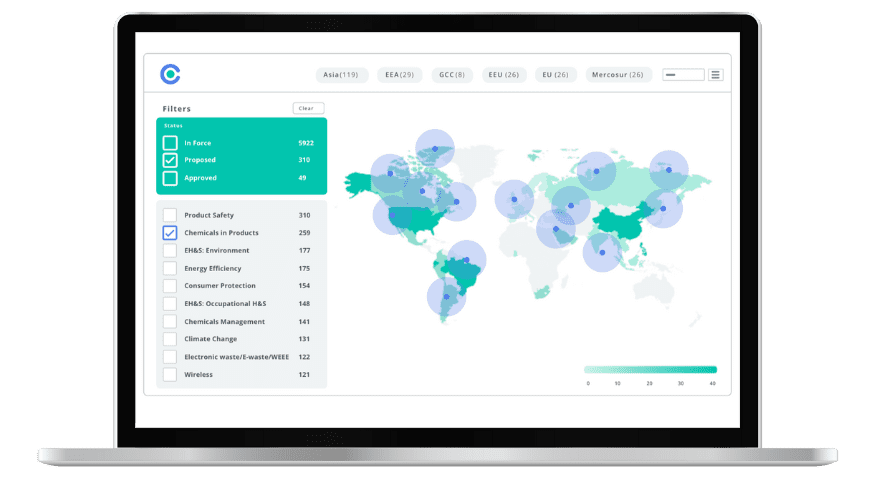
Simplify Corporate Sustainability Compliance
Six months of research, done in 60 seconds. Cut through ESG chaos and act with clarity. Try C&R Sustainability Free.
